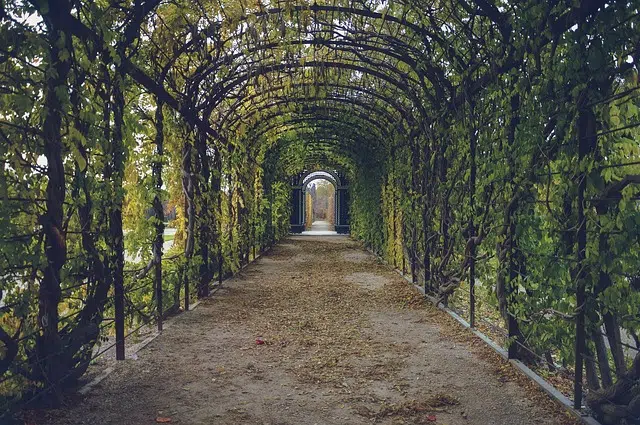
The stems of vines twine around different bodies or objects to develop.
The adjective creeper is used to describe the plant whose stem is entangled in protruding elements . The term is also used as a noun, which is why we can talk about climbing plants or, simply, vines .
It is important to indicate that entangle is a verb with several uses. In this case, we are interested in its meaning as the action of intertwining or coupling one thing with another . The stems of the vines, in this way, are linked to a pole or other similar object to climb and develop.
Guide plants
Vines are part of the group of guide plants or guiding plants . Their peculiarity is that they are not able to stand on their own: that is why they must be attached to something.
The stems of the vines are thin and flexible. These species , which are usually found in areas with a warm and humid climate, have the peculiarity of growing quickly because they need to become entangled without loss of time to be able to survive.
What vines do by attaching themselves to another body is to seek better access to the sun's rays . In this framework, they can be exposed to sunlight that reaches far from their place of germination and without supporting themselves.
Differences between vines and climbers
It is common for confusion to occur between vining and climbing plants. It must be clarified that there are vines that are climbers, but others are not.
Climbers are those that climb tree trunks, walls or other support. Their peculiarity is that they have fixing organs . Usually, over time, they even end up forming a kind of woody trunk that allows them to support themselves better.
Only if a climbing plant twines around the trunk is it called a vine. At the same time, there are vines that do not climb: these are those guiding plants that, without climbing, cling to a substrate .

The Campsis radicals species is known as trumpet vine, climbing trumpet, red bignonia or Virginia jasmine.
The example of common jasmine
Common jasmine , scientific name Jasminum officinale , is among the most popular vines and climbers. It can reach a height of six meters, covering pergolas, walls and other structures.
The aroma of common jasmine flowers is highly valued. In fact, perfumes and other aromatic products are made with essential oil.
The purple bellflower, a vine native to the American continent
Ipomoea purpurea is known as purple bellflower , Mary's mantle or morning glory , among other names. It is a species native to South America , Central America and Mexico .
The purple bell twists around itself to form structures. It can reach three meters in height, with very fine stems, heart-shaped leaves and flowers that open during the day and close at dusk.
The case of the climbing trumpet
climbing trumpet, trumpet vine, Virginia Jasmine y red bignonia son algunos de los names de la Campsis radicals. Esta enredadera perenne y leñosa es fácilmente reconocible por sus flores con apariencia de trompeta.
Native to the forested areas of the southeastern United States, its thick foliage attracts numerous birds that choose it for nesting. He even usually summons hummingbirds .
